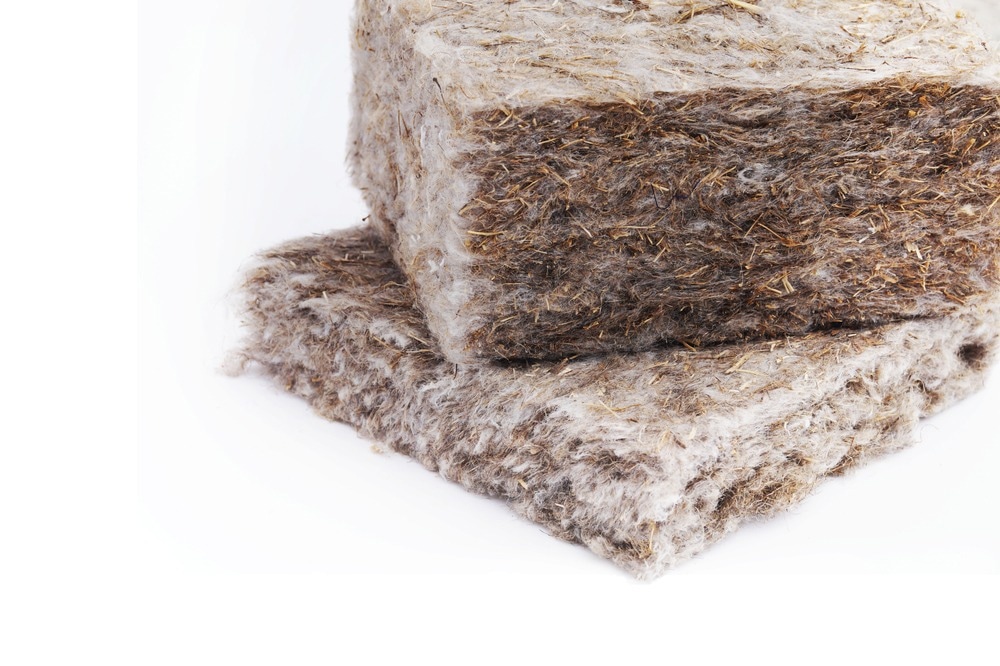Today, we may be familiar with flax as a cooking ingredient in the form of flaxseed and oil, but it has much more to offer. Scientists are now exploring how flax can be used as a building material, which could help the world move away from its heavy reliance on environmentally damaging building processes towards a more environmentally-friendly future.

Image Credit BKV_X7/Shutterstock.com
From wrapping mummies to catching fish: throughout history, flax has enhanced our daily lives
Flax, known in Latin as Linum usitatissimum - meaning “most useful,” is an apt description of the plant that has been used for centuries by civilizations across the globe as a multifunctional workhorse. The ancient Egyptians used flax to produce the finest linen, which was not only used in the making of exceptional clothing to emanate a sense of nobility, but it was also used to wrap the dead, preserving the Egyptians as mummies. Less well-known uses of flax throughout history include making rope, underwear, oils, sailcloths, and fishing nets.
Flax is a natural, environmentally-friendly material
Irrigation, fertilizers, herbicides, and pesticides are not required for growing flax. Therefore, unlike the processes involved in the cultivation of many crops, the cultivation of flax does not contribute to river and groundwater pollution. In addition, flax is a fast-growing plant, which elevates its status as a renewable material. Its cultivation also processes very little waste as all parts of the plant are used; nothing is discarded, and the long and short fibers and seeds are used to create a variety of bio-materials. Flax can increase soil productivity for around 6 to 7 years, and it retains 3.7 tonnes of carbon dioxide per hectare per year.
To summarize, the cultivation of flax is close to the organic standard naturally; there are minimal improvements that could be made to the processes involved in growing flax to improve its sustainability. Standard building materials, such as concrete, sit on the other end of the spectrum. The concrete industry, for example, is a heavy polluter, releasing 2.6 billion metric tonnes of emissions in 2021.
Flax: an unlikely solution to the contribution industry’s carbon footprint?
A number of emerging projects are demonstrating how flax can be used in today’s modern construction projects as an innovative alternative to traditional materials. In 2016, students at Eindhoven University of Technology, Delft University of Technology, and Avans University of Applied Sciences, all based in the Netherlands, constructed the world’s first bio-composite bridge. Built on the Eindhoven University of Technology campus, the bridge was made from a bio-composite material that included flax and a special bio-resin. Following the success of this bridge, the construction of three more bridges are underway. The first was completed in Almere in 2022. Each of the bridges will transport both pedestrians and cyclists.
In Germany, scientists at the University of Freiburg and the University of Stuttgart collaborated on a project to construct a lightweight pavilion from flax fibers. The structure, which was woven by a robot, sits in the botanical garden at the University of Freiburg. The project demonstrated how flax can be used as an alternative to conventional materials that are harmful to the environment.
There is even work underway to develop flax-based materials for use in space. The European Space Agency (ESA) has plans to develop bio-composite materials for a number of applications in space in order to shift towards more sustainable processes. Recently, a General Support Technology Programme (GSTP) contract with Bcomp and RUAG Space (both based in Switzerland), resulted in the development of a viable material for use in building spacecraft structures from flat fibers and epoxy resin.

Image Credit: Aliya Fahrtdinova/Shutterstock.com
Finally, flax is also being looked at by the concrete industry as a way to reduce its negative impact on the environment and improve its sustainability. Conventional concrete is often reinforced with steel bars. Replacing these steel bars with natural fibers is one way the sustainability of concrete production can be improved. Flax appears to be the strongest among the plant fibers that could be used for this application. Flax fibers have high tensile strength and durability that lend themselves to this application.
While using flax as a replacement for steel bars will improve the sustainability of concrete, it will not be the entire solution - the concrete industry is one of the world’s greatest polluters and it will take a multi-pronged approach to limit the impact of this industry on the environment.
Conclusion
Flax has a huge potential as a building material. Its use as an alternative to conventional materials could reduce the environmental impact of construction projects around the globe. Currently, the world is under immense pressure to reduce the carbon footprint of human activities, and construction is a particularly significant contributor to greenhouse gases. Flax will likely be one of many sustainable building materials that emerge in the coming years in order to address this problem. Its use in concrete may be particularly useful in emerging economies where concrete construction is accelerating.
More from AZoBuild: The Use of AI in Construction
References and Further Reading
(2020). Using flax fibres to build structures in space [online]. European Space Agency. Available at: https://www.esa.int/Enabling_Support/Space_Engineering_Technology/Shaping_the_Future/Using_flax_fibres_to_build_structures_in_space (Accessed March 2023)
(2021). Robotically-wound flax fibers – perfect for sustainable construction [online]. Innovative Origins. Available at: https://innovationorigins.com/en/robotically-wound-flax-fibers-perfect-for-sustainable-construction/ (Accessed March 2023)
(2022). And finally… Flax ‘rediscovered’ as new building material [online]. Scottish Construction Now. Available at: https://www.scottishconstructionnow.com/articles/and-finally-flax-rediscovered-as-new-building-material (Accessed March 2023)
Coutts, R.S.P. (1983) “Flax fibres as a reinforcement in cement mortars,” International Journal of Cement Composites and Lightweight Concrete, 5(4), pp. 257–262. Available at: https://doi.org/10.1016/0262-5075(83)90067-2.
Heller, K., Baraniecki, P. and Praczyk, M. (2012) “Fibre flax cultivation in sustainable agriculture,” Handbook of Natural Fibres, pp. 508–531. Available at: https://doi.org/10.1533/9780857095503.2.508
Linen – the original sustainable material [online]. Victoria and Albert Museum. Available at: https://www.vam.ac.uk/articles/linen-the-original-sustainable-material (Accessed March 2023)
Disclaimer: The views expressed here are those of the author expressed in their private capacity and do not necessarily represent the views of AZoM.com Limited T/A AZoNetwork the owner and operator of this website. This disclaimer forms part of the Terms and conditions of use of this website.